You can tell that you have a clogged radiator once you start observing signs such as overheating and inefficient cabin heating. But why wait for this to happen when performing simple radiator maintenance can help you avoid this altogether?
As was mentioned, a clogged radiator can cause your car to overheat and may eventually lead to engine damage. This is why it’s essential to learn how to clean a radiator properly—by cleaning the external fins every year and flushing it according to the manufacturer’s maintenance schedule.

You can find the recommended service schedule listed in your owner’s manual. Usually, in the manual, you’ll find a radiator flush listed as a “coolant service” or something similar.
Best Way to Clean a Radiator
If the cooling system isn’t serviced according to OEM scheduling (coolant change intervals), the system begins to become contaminated with rust, scale, etc. to the point that the tubes in the radiator begin to clog.
Furthermore, the fins on the outside of the radiator can clog with dirt and debris so that air cannot pass through the fins. The problem is that the A/C condenser is in front of the radiator so that you can’t see it just standing in front of the vehicle most of the time.
The fins on the outside of the radiator can clog with dirt and debris so that air cannot pass through the fins. The problem is that the A/C condenser is in front of the radiator so that you can’t see it just standing in front of the vehicle most of the time.
–Richard McCuistian, ASE Certified Master Automobile Technician
There are two ways to clean the radiator: internally and externally. The latter involves cleaning the radiator fins located on the outside while the former has to do with flushing out old fluid and all the buildup that may have accumulated inside of the radiator.

Each one entails a specific process that we’ve broken down in this guide to help you clean your radiator thoroughly.
How to Clean Radiator Fins
First, let’s start with the outside of the radiator. This involves the removal of any dirt, pebbles, bugs, and other foreign material on and around the fins on the front of the radiator.
Getting rid of any debris that has accumulated on the exterior of the radiator ensures proper airflow, which is essential in lowering the temperature of the hot coolant (also known as antifreeze).
Note: Before performing any maintenance on the radiator, make sure to consult the factory repair information and follow the instructions outlined by the manufacturer.
Using a spray bottle
1. Let the radiator cool
Make sure that the radiator is completely cool to the touch before starting the cleaning procedure.
2. Dilute cleaning solution with water
The ratio of the solution and water is relative to the brand of product you get, so make sure to check the back label of the cleaner for further instructions.
3. Transfer the solution to a spray bottle
Once you’ve prepared your diluted solution, pour it into a clean spray bottle.
4. Apply the solution
Spray the prepared solution on the radiator fins.
5. Use a brush to clean the fins
Get a soft-bristled brush and carefully clean up any debris that has accumulated in and around the radiator fins. Exercise caution to avoid bending the fins out of place.
6. Straighten any fins that were bent out of shape
If you see any fins that are bent or deformed, carefully take a flathead screwdriver to restore them to shape. You may also use any thin implement such as an ice pick, a barbecue skewer, or even a toothpick.
7. Rinse with clean water
If you’re using a hose, make sure to set it to low pressure to ensure gentle cleansing. Repeat steps 1 to 3 until the water turns clear after rinsing.
8. Allow to dry
Let your radiator fins air dry.
Using a hose
Alternatively, you can also use a hose with a nozzle to wash outside of the radiator. Just like the method above, wait until the radiator has completely cooled down, then brush the radiator fins using light pressure. Make sure to use a soft nylon brush and do not go against the direction of the fins.
Once you’re done, get your hose and rinse everything out, allowing the water to stream from the outside in.
And just the same, allow it to air dry.

How to Flush a Radiator
Choose the right coolant flush or cleaner product so that don’t end up damaging your radiator or your engine. Refrain from using chemicals that could potentially be abrasive, such as vinegar and bleach, as both will make the body prone to rust and corrosion.
Once the body of the radiator gets corroded, surrounding components such as the engine head, rubber gaskets, and seals can get damaged.
Warning: Never remove the radiator cap or attempt to service the radiator when the engine is hot. Serious injury may result.
1. Allow the engine to cool down
Ensure that the engine is completely cool before starting with the procedure.
2. Jack up the vehicle
Safely raise and support the vehicle using a jack and jack stands. Chock the rear wheels and set the parking brake.
3. Drain the coolant
Place a catch pan under the radiator. Then, loosen the radiator petcock valve to drain the coolant.
4. Run the flush solution through the radiator
Close the radiator petcock valve. Next, follow the instructions on the flush solution to properly dilute the product, then run it through the radiator and cooling system.
Typically, the process involves mixing the product with water, adding the solution to the radiator, then running the engine for 10 minutes or so with the heater on high.
Be sure to keep an eye on the temperature gauge during the process. If the engine starts to run hotter than usual, shut it off immediately to avoid damage.
Note: It’s a good idea to use distilled water rather than regular tap water when diluting the flush solution.
5. Drain
Allow the engine to cool. Then, remove the radiator cap and drain all of the flush solution out of the cooling system.
6. Run water through the radiator
Close the radiator petcock valve again. Then, follow the instructions on the flush solution regarding the next step: running water through the radiator.
Typically, the process involves adding distilled water to the radiator, then running the engine for 10 minutes or so with the heater on high.
Again, be sure to keep an eye on the temperature gauge. Shut it off immediately if the engine runs hotter than usual as this can lead to damage.
7. Lower the vehicle
Remove the fluid catch pan. Then, safely remove the jack stands and lower the vehicle.
8. Refill the radiator with antifreeze/coolant
Allow the engine to cool. Then, refill the radiator and overflow bottle with the correct type of pre-diluted coolant. Do not add straight coolant to the radiator—the product must be a pre-diluted 50/50 mixture.
You can determine which type of coolant is best for your vehicle by consulting your owner’s manual or referring to your local dealership.

9. Start the engine and monitor cooling system operation
After you’ve refilled the cooling system, start the engine and monitor the temperature gauge for an extended period of time. Should the engine begin to run hotter than usual, shut it off immediately to avoid overheating.
If the engine starts to run too hot, either the coolant level is low or air got into the cooling system during the flush.
Air can be bled from the cooling system by following the vehicle manufacturer’s recommended procedure (usually found in the factory repair manual). You can also bleed the system of air by using a vacuum-fill tool and compressed air.
How Often Should You Flush Your Radiator?
You should flush your car’s radiator according to the manufacturer’s maintenance schedule (outlined in your owner’s manual). As a rule of thumb, most automakers recommend flushing traditional green coolant, which is technically called inorganic additive coolant, every two years or 50,000 miles.
On the other hand, automakers usually recommend flushing modern organic acid technology coolant every five years or 150,000 miles. Once again, consult the manufacturer’s service schedule to know when to flush your radiator.
Benefits of Flushing Your Radiator
It goes without saying that flushing your radiator comes with a lot of benefits. Here are a few:
Clearing of rust and scale build-up
Doing a radiator flush helps you get rid of rust and scale deposits that accumulate as time goes by. This prevents overheating that could possibly happen when these deposits are left unattended.
Gets rid of contaminants
Cleaning your radiator also helps remove old antifreeze that could probably contain contaminants. When left unnoticed, these contaminants can bog down the cooling system. Thus, it is important that these are flushed out regularly.
Instant check-up
If you have the flushing or cleaning done by a professional, it’s likely that you’ll also get your entire radiator checked. The good thing about this is that you would be able to get everything done in one go.
Prevents rust and foam from forming
The additives from newly refilled antifreeze will stop rust and foaming in the cooling system. This way, the entire system will be able to function at its optimum.
Radiator Maintenance: How to Keep Your Radiator in Good Shape
Now, you wouldn’t want all the effort you spent on flushing your radiator to go to waste. You’d want to take better care of your radiator now so you can enjoy consistent performance from your cooling system.
Here are some tips you can look into:
Always top up your radiator fluid
Make sure you always have an adequate amount of radiator fluid. See to it that your coolant and water is always 50-50 in ratio. If you do not want to take chances with the proportion, you can always get a ready-made mix from your trusted auto supply shop.
Make sure the radiator cap is attached securely
This is to ensure that the coolant chamber remains pressurized, thus avoiding leaks and other problems.

Schedule the flush and oil change at the same time
To make it a point that you flush your radiator as often as you should, schedule it at the same time as your oil change.
While it can be tempting to follow internet tips that teach you how to clean a radiator with baking soda, it can do more harm to your car than good. It’s best to just stick to the steps and tips outlined above than experiment with so-called hacks that do not guarantee success.
Getting Your Hands on a New Radiator
If you spot issues on your radiator while cleaning it, don’t ignore them. Examine the part or ask a mechanic to check for a diagnosis. If replacing the radiator is the only way to resolve the problems, make sure you get a high-quality replacement. For radiators that perform like your stock part, shop online here at CarParts.com.
All our radiators are not only sourced from top manufacturers but also hand-picked by industry professionals to ensure they’re built to last. Despite that, they come with a low-price guarantee. In short, you can get a top-notch replacement without breaking the bank.
To get started, use your mobile device or computer to visit our website. Input all of your ride’s details into the vehicle selector to narrow down the selection to compatible radiators. Then, use the search filters to find the ones that fit your needs.
Because our warehouses are strategically located all over the US, you won’t have to wait long for your replacement. If you have any questions, contact us anytime via our toll-free hotline, and our friendly customer service representatives will assist you.
Shop for a new radiator today to fix your ride in no time!
Products Mentioned in this Guide
Shop this Project



Any information provided on this Website is for informational purposes only and is not intended to replace consultation with a professional mechanic. The accuracy and timeliness of the information may change from the time of publication.


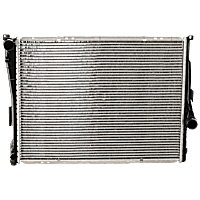 Radiator
Radiator
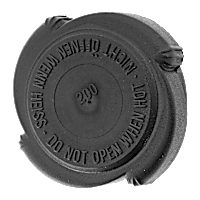 Radiator Cap
Radiator Cap
 Temperature Gauge
Temperature Gauge
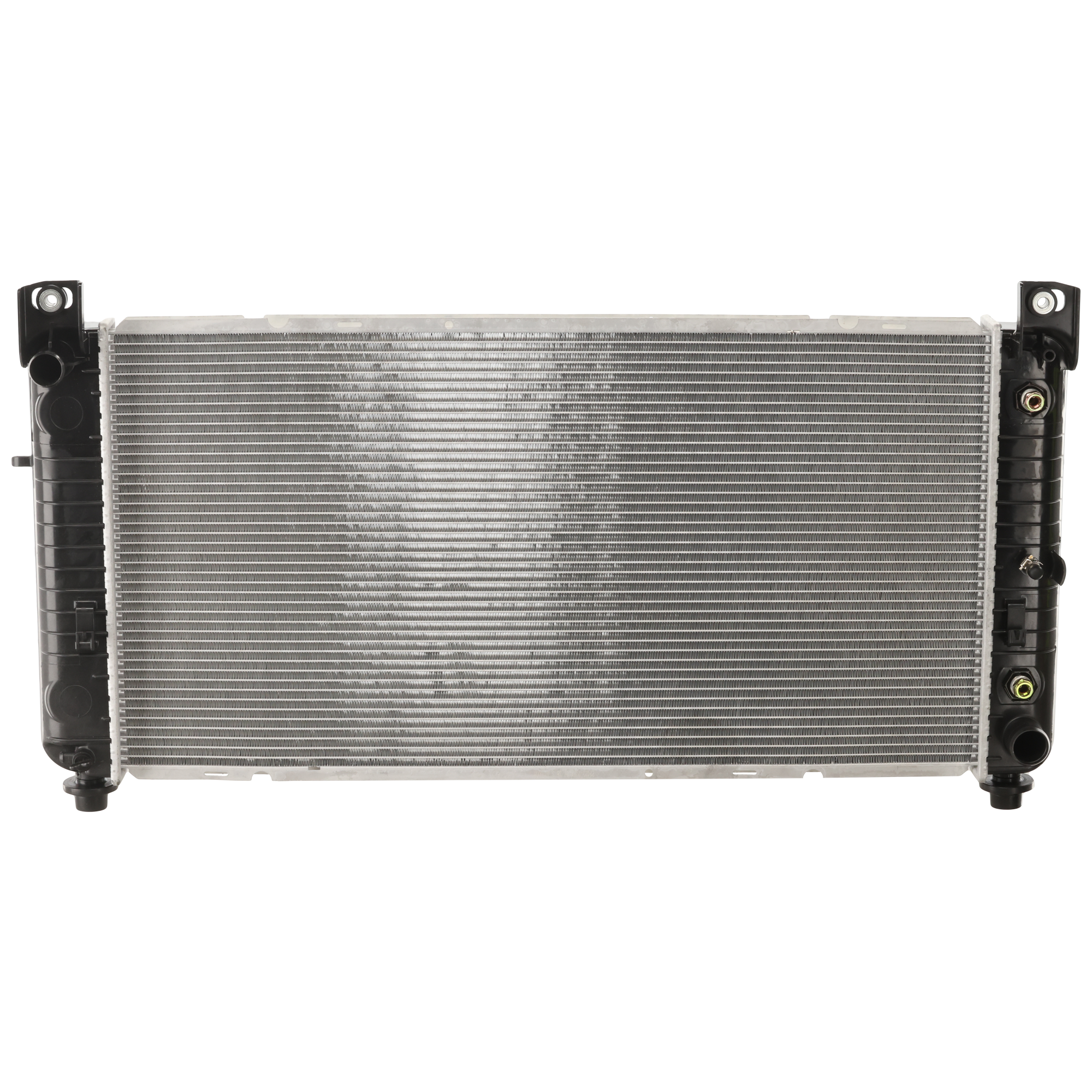
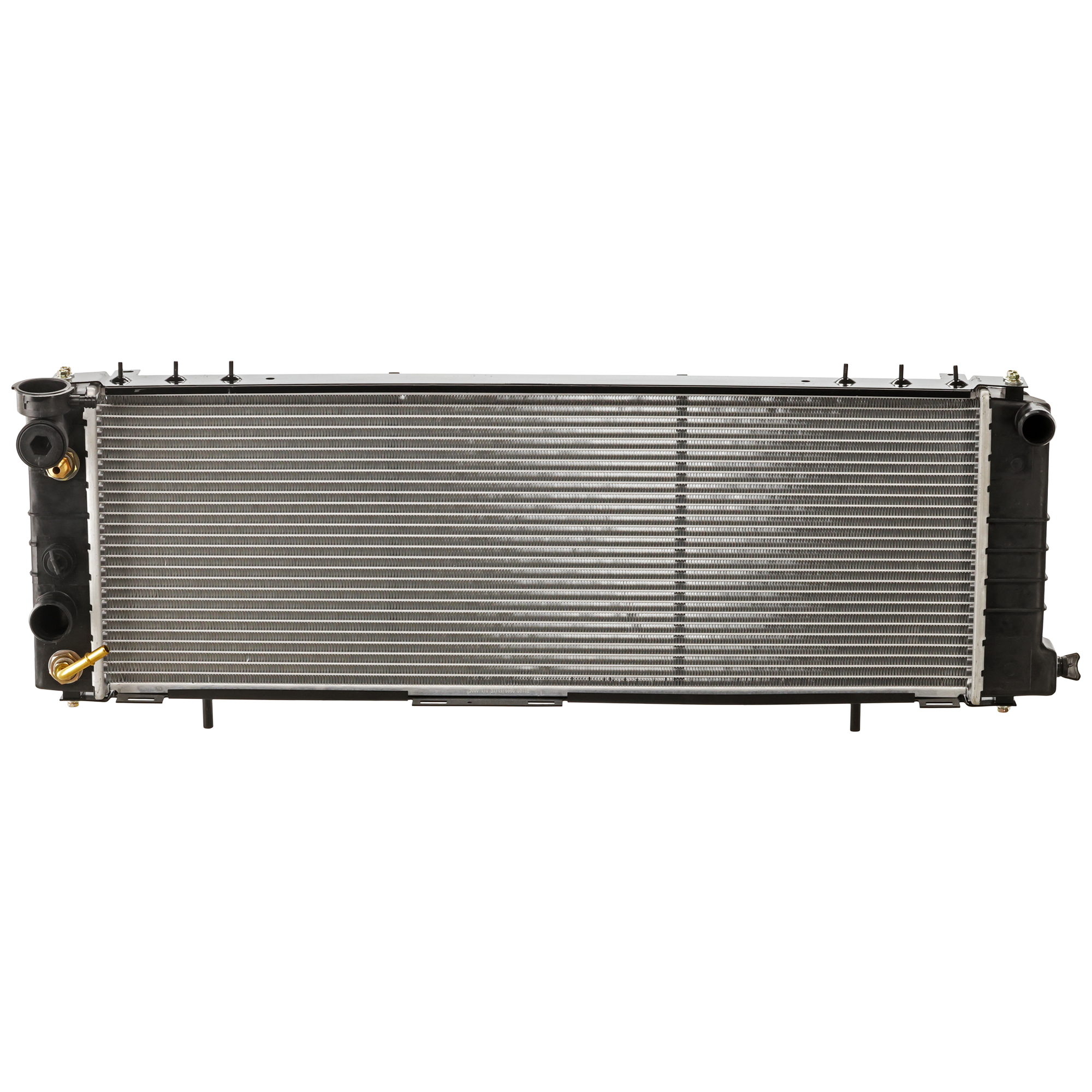
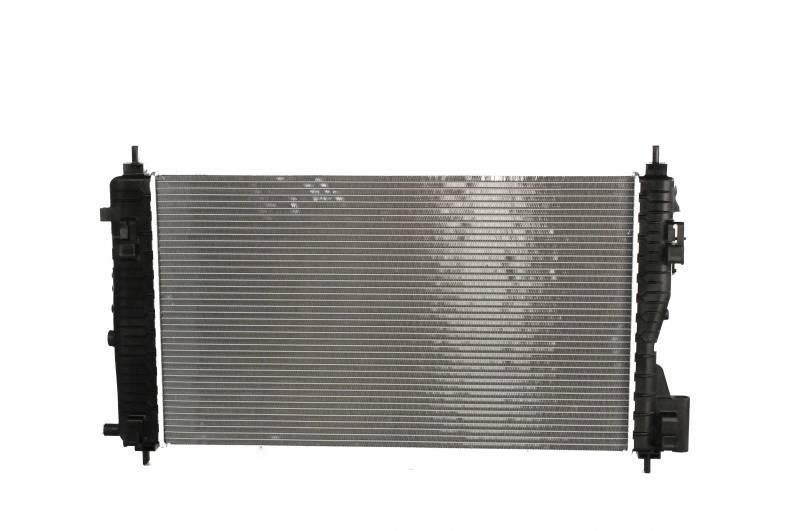


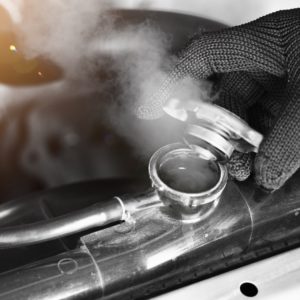

























You can use Vinegar Solution as Radiator Flush. it is proven to be effective in aiding a clogged radiator. Flushing with vinegar clears out debris and sediment build-ups even those accumulated over a long time.
“If you see any fins that are bent or deformed, carefully take a flathead screwdriver to restore them to shape. You may also use any thin implement such as an ice pick, a barbecue skewer, or even a toothpick.”
I would never use a shape metal tool like an “ice pick” or “barbecue skewer” to straighten bent fins. Anything with a very sharp point can potentially scratch or poke a hole in thin metal tubes. Any hard plastic tool, like an Interior Trim removal tools would be much safer.
“A clean radiator can prevent the engine from overheating and help keep the cabin cool.”
I don’t understand the logic, here. A clean radiator helps to keep the Engine cool – it doesn’t cool the car interior.
In reality, a clean radiator (and clean Heater Core), would help keep the cabin warm – not cool.
Schedule the Flush and Oil Change at the Same Time
“To make it a point that you flush your radiator as often as you should, schedule it at the same time as your oil change.”
Engine oil and antifreeze have different lifespans. I don’t see why the coolant should be changed as often as the engine oil.
According to Richard McCuistian,
How Often Should Coolant Be Flushed?
https://www.carparts.com/blog/how-often-to-flush-coolant-and-other-faqs/
“The general rule of thumb is to flush and replace your coolant every two years or every 30,000 miles–whichever comes first.”
Older cars using non-synthetic oil, were recommended to change the oil at about 5,000 miles (as opposed to 30,000 for the coolant).
“Manufacturers have different recommended mileage limits for coolants. These can fall anywhere from 30,000 to 150,000 miles depending on the type of coolant used and the design of the engine’s cooling system.”
Even newer cars using longer-life Full Synthetic oil, need the oil changed before 30,000 to 150,000 miles. Therefore, the coolant doesn’t need to be flushed as often as the oil needs to be changed.